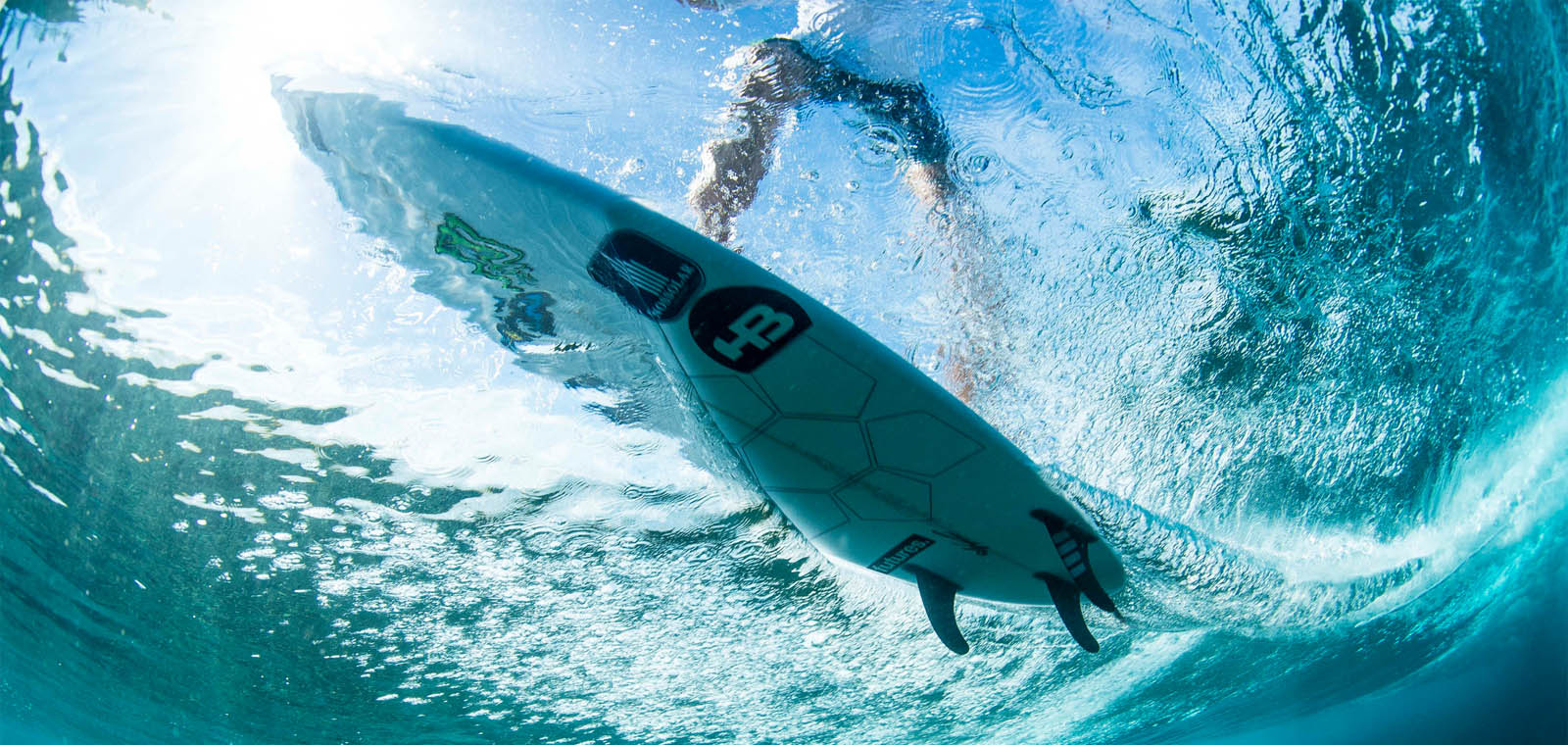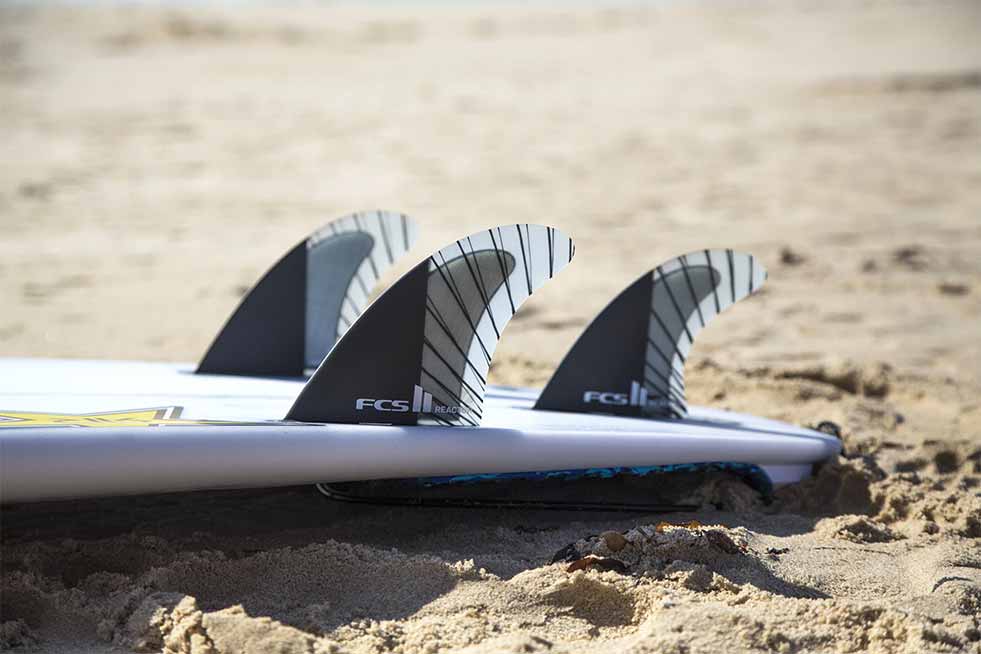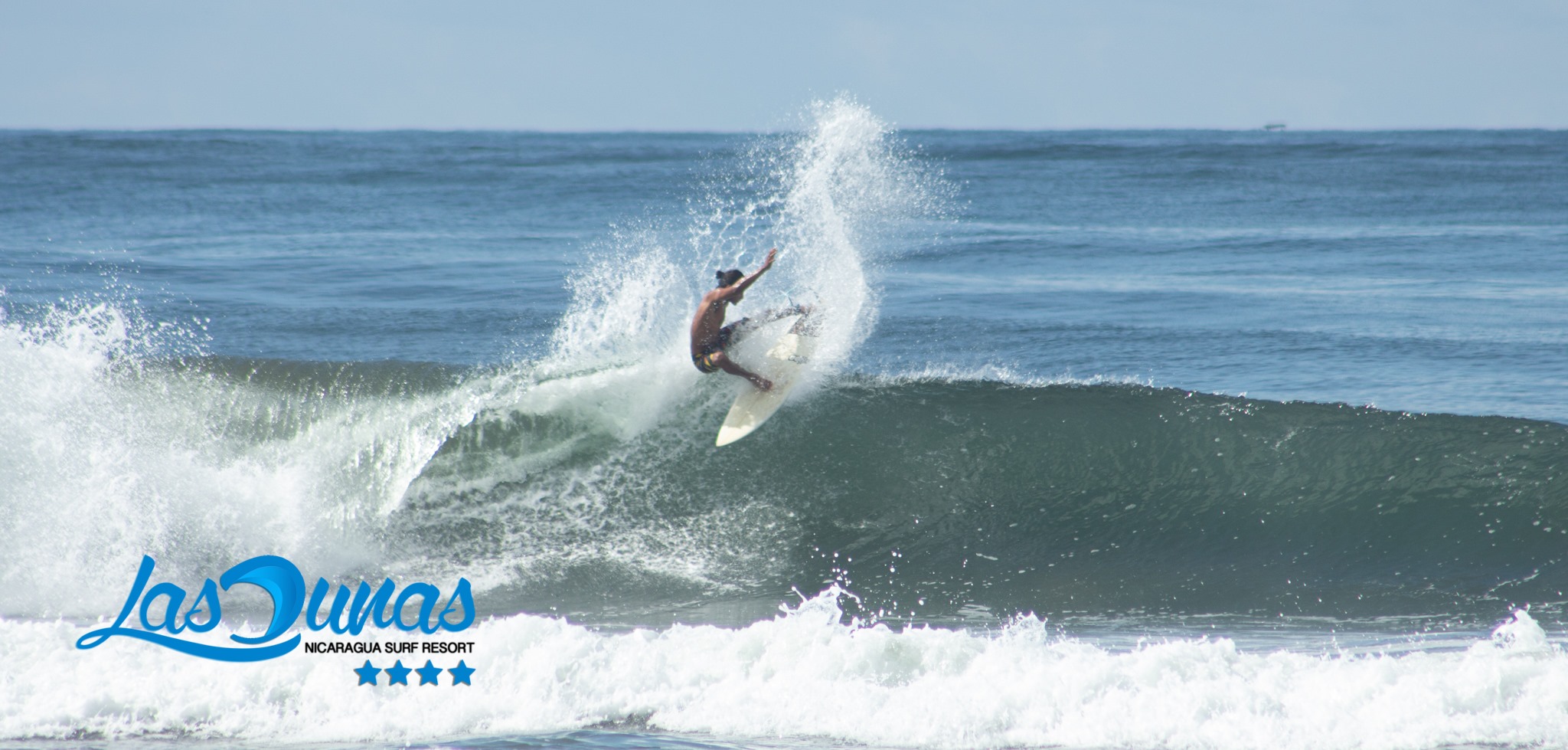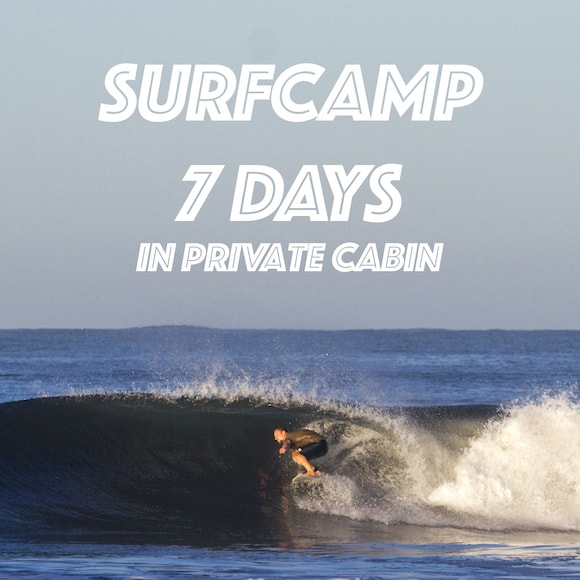
The fins in surfing play a relevant role when it comes to good surfing as they complement our board and technique.
Choosing ours correctly is essential, since they must work better for our aptitude and our surfer level.
All of this depends on various factors, from our height and weight to our surfing style and the shape of the surfboard.
This topic is always discussed in the SurfCamps where experts can not only teach you about techniques but also advise you when purchasing your equipment.
Fins in the Surf: What are they?
They are the pieces similar to large shark teeth that are located in the lower part of the board, just below our feet.
In some cases fixed (no longer used) and mostly removable and interchangeable.

The fixed fins do not disassemble, as the name implies, which only configures the board for a style, they provide more finesse and smoothness.
Its most relevant against is the complexity of its repairs. The removable fins are the most used today, either in FCS or Futures systems.
As the name suggests, they are disassembled and this allows for greater mobility, handling and storage.
Fins in Surf: Types of Configuration
1. Single keel: Single Fin
They are most common on longboards, midlengths, and retro-style boards. This type of configuration is the classic in surfing.

A single keel limits the turns, does not allow sudden changes on the waves. However, they are ideal for line surfing, that is, fast. Provides control and stability on longboards.
2. Two Fin: Twin Fin
The double fin configuration will make your board more maneuverable. Offering a gliding sensation similar to that of Surf Skate, with its open and long turns. They are not ideal for big waves and generally the twin Fin are used in short boards in order to improve the speed of the same. The fish design is the basic image of a Twin Fin.
3. Three Keels: TriFin or Thruster
Currently the most widespread configuration of boards has 3 fins. The two outer fins are located closer to the center of the board, both in Toed-In shape, that is, inclined to the center.
Flat on the inside, allowing more water flow and increasing speed. The central keel is located more towards the tail, it is symmetrical in shape which provides stability.

This model was invented by Simon Anderson.
The TriFins offer greater control, maneuverability and stability, which is recommended for beginners and professionals looking to improve their technique.
4. Quads: 4 and 5 fin boards
The Quads configuration is a kind of version of the Twin Fin but with more grip for deep turns.
By having two rows of fins on each side and not having a central fin, it offers a faster design in smaller waves, since it channels the water to the ends of the board, which helps in acceleration.
All this adding stability and solidity when surfing big waves.

The best thing about Quads is that you don’t necessarily have to use the 5 fins, but according to your experience and technique, you adapt it as either a TriFin or a Twin Fin. All without changing the board!.
5. The Bonzer: Since the 70’s
This Fins model was invented by the Campbell brothers in the 70s and has remained active to this day.
Whether with 2 or 4 elongated fins on the sides of the board, sloping and low height and a central keel, in many cases, the bottom of the board is ribbed, directing the flow of water.
This configuration provides speed, direction and grip, working perfectly in small and large waves.
Those are some common types of fins in surfing, as you can see, there are multiple options and combinations, all of them with their own purpose.

If you are looking to improve your surfing and your technique, the best thing you can do this summer is to sign up for a Surfcamp at Las Dunas Surf Resort.
We are located on the beautiful beach of Aposentillo, in Nicaragua.
Come and live the Las Dunas experience!
